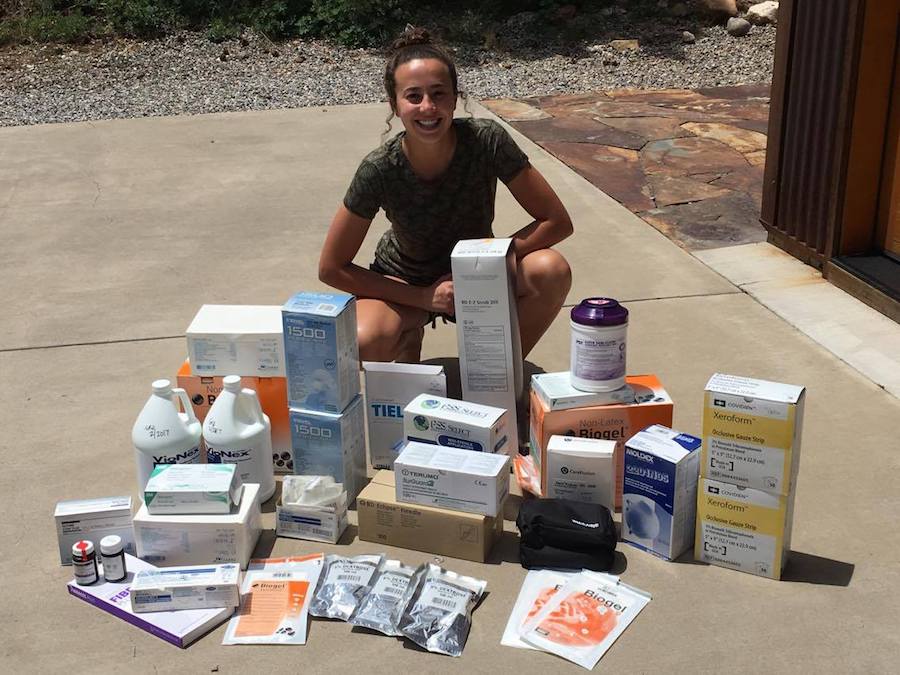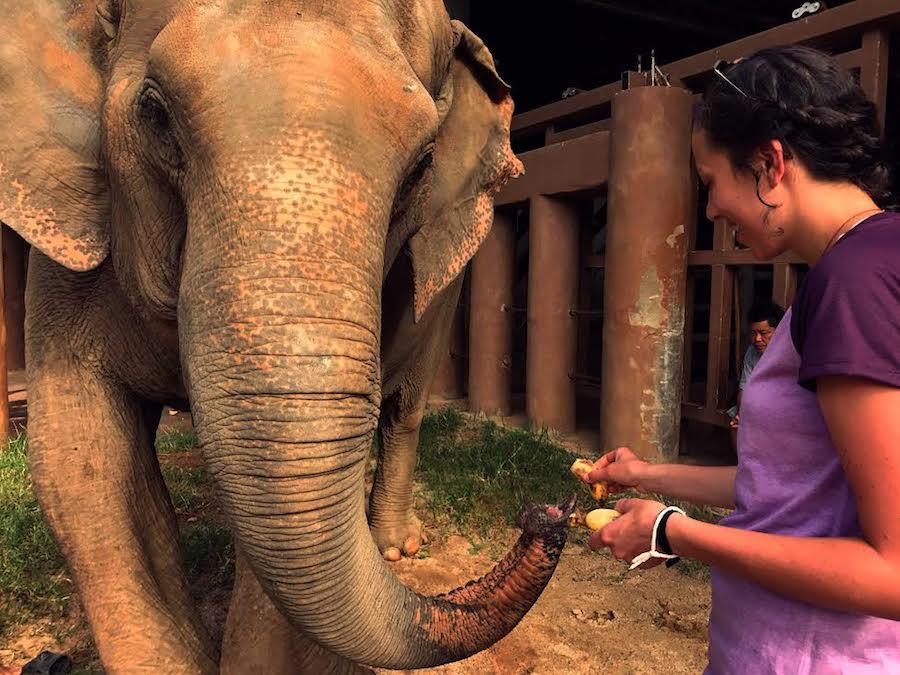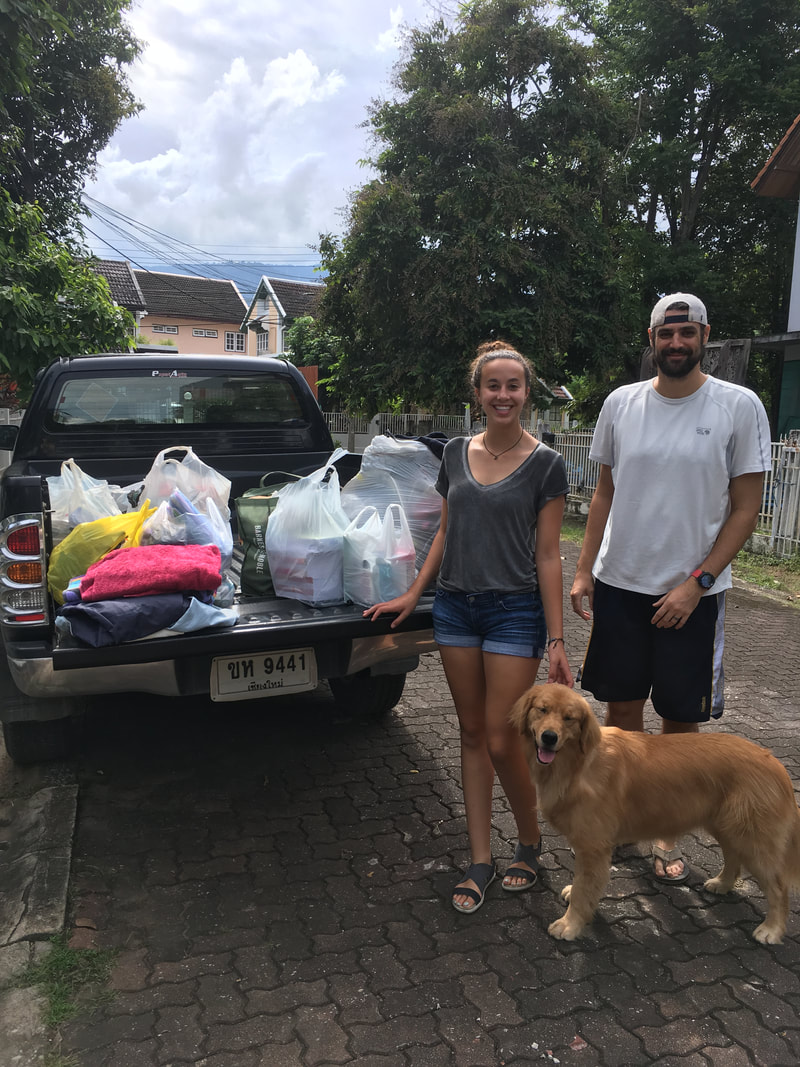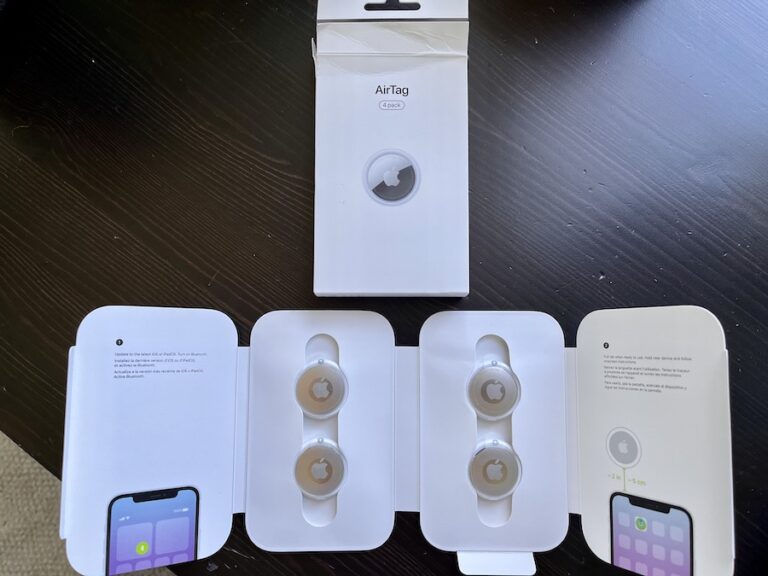7 Things You Should Know About Donating When You Travel
It’s important to be a responsible traveler. In this article, Amina shares important tips and things to know when making donations while you travel.
I’m the founder of 27 Heartbeats, an organization that helps to donate medical supplies to animal and human clinics around the world. And I also love to travel!
While I don’t expect that you’re trying to find a way to carry 300 pounds of wound treatments abroad with you like I did this summer, you might have an upcoming trip and think, “How can I do a little something to help?”
After two years of organizing donations abroad, my tips are below.
Things You Should Know About Donating When You Travel
1. Money is the Easiest Donation
If you are planning to go out and buy items to donate, stop right there! You’d be better off donating the money itself.
Money is lightweight and uses no fuel to transport. In most countries, it goes further than it does in America. And most importantly, it can be used to buy whatever an organization needs most.
If you want to have a fundraiser or donate to a cause you believe in, awesome! Consider donating the money directly–you can still make this personal by donating in person and learning more about the cause.
But sometimes, you want to donate without spending anything, which is also great! In that case, there are some tips below.
2. Talk to a Reputable Organization First
If you’re going to donate items, which is often called “in-kind donations,” you should find an organization you want to support and make sure you bring something they want.
Otherwise you might waste your time! I collected a large number of dog toys for a shelter… before I realized they don’t accept toys because they lead to dog fights.
You might find that the organization you love needs something you didn’t think of that you can easily get for free! Some good examples are medical supplies (more on this below), old towels, kid and baby clothing and items, or school supplies.
3. Research Your Baggage Allowances and Fees
There’s nothing worse than getting to the airport and finding out it’s going to cost you $100 to carry your bag of “free” donations on the plane with you. So call ahead!
Many international flights allow you to check two bags for free, which is a great opportunity to use one of those bags for donation items. If you use a collapsible tote bag or duffel, you can put it in your other suitcase on your way home.
If you find that baggage fees prevent you from bringing your donations, don’t lose hope! Look for an organization where you can donate at home.
4. Find out about any Customs Regulations
If you’re bringing clothes or toys to donate, you’re probably fine. But if you’re bringing medicine, medical supplies, or other items that might be regulated, you should find out the rules.
The easiest route is to talk to the organization where you’re planning to donate–they will have been through it before! Planning ahead takes a little time but it can help you avoid disappointment, or worse, trouble with the law in a foreign country.
5. Share your Cause and ask for Support
Once you decide what you want to donate, it’s time to share your cause! Talk to friends and family about what you’re collecting and share info about the organization you’re supporting.
Sharing photos of donations you receive will help motivate others–you can even share photos of your suitcase filling up to encourage people to get involved.
I suggest talking to local organizations, especially ones related to what you’re doing. Pet stores, vets offices, medical offices, consignment stores, or other stores and businesses might have items to donate.
You should thank them on your social media so that your friends and family know about their help!
6. Donate Heavy Items at Home!
People love to donate books, but books are heavy and take a lot of fuel to transport. The same is true for liquids, which can also leak and cause problems in your luggage.
I suggest that outside of essential children’s medications or simple English books (if that’s what’s been requested) you leave the heavy stuff at home and focus on lighter items, such as towels, children’s clothing, diapers, and sanitary pads.
(Once again, I wouldn’t buy any of these items at home–they’re generally cheaper abroad. But if you have them already to donate or get them donated in-kind, they are often needed!)
7. Take Pictures and Share your Experience
When you drop off your donations with your organization, capture the moment. You can share the photos with everyone who donated to thank them. You might inspire other people in your community to donate items during their next trip.
I hope that you’ll be encouraged to contribute in a positive way on your next trip. If you’re interested in learning more about how you can collect medical supplies that would otherwise end up in landfills and donate them to save lives around the world, check out 27 Heartbeats!
About the Author: Amina Youssef is a high school senior in Durango, Colorado. She loves travel, skiing, mountain biking, animals, and helping to move medical waste from landfills to lifesaving hands.
More Ideas to Consider When Donating Abroad
Here are a few more tips and insights we want you to consider, to make sure your efforts are meaningful, effective, and sustainable.
8. Understand Cultural Sensitivities
When donating items, it’s crucial to understand the cultural context of the region you’re visiting. Some items might not be appropriate or welcomed due to local customs or traditions.
For example, certain clothing styles might be inappropriate in conservative societies. Research and reach out to local organizations to ensure your donations are respectful and useful.
9. Consider Volunteering Your Time
While donating physical items is valuable, your time and skills can be just as impactful. Look for local volunteer opportunities where you can contribute directly to the community.
Whether it’s teaching a skill, helping in a clinic, or participating in local projects, your involvement can make a significant difference and provide a richer travel experience.
10. Plan for Sustainable Donations
Consider the long-term impact of your donations. Items that require ongoing maintenance or are disposable might create dependency or environmental issues.
Opt for sustainable items, such as reusable sanitary pads, solar-powered lights, or durable educational materials, which can provide lasting benefits.
11. Engage with Local Communities
Take the time to engage with the communities you’re helping. Learn about their needs, challenges, and successes.
Building relationships can lead to more meaningful and effective contributions. It is also CRITICAL to ensure you’re not disempowering the community, as described in the book When Helping Hurts.
Plus, you’ll gain a deeper understanding of the impact of your donations and might even identify new ways to support them in the future.
12. Collaborate with Fellow Travelers
Consider organizing a group donation effort if you’re traveling with friends or part of a travel community. Pooling resources can amplify your impact.
Collaborate with fellow travelers to gather more items, share transportation costs, and support larger initiatives.
13. Leverage Technology for Donations
Crowdfunding platforms, social media campaigns, and dedicated apps can help you raise funds, gather supplies, and spread awareness about the cause you’re supporting.
Document your journey (responsibly!) and share real-time updates to keep your supporters engaged and informed.
14. Advocate for Responsible Tourism
Encourage fellow travelers to respect local cultures, support local economies, and consider how they can positively impact the communities they visit.
You might also like this posts:
When Helping Hurts: How to travel intentionally
Rules for Intentional Travel: Spread the Wealth
Rules for Intentional Travel: Taking vs. Giving
10 Ways to Make Your Travel More Sustainable
Like this post? Save it for later or share with friends!











Great tips! Totally agree with number one: money is the best. This way, local economies are also supported. It’s easier for donors, too! But I get that there are more “feel good” fuzzies you give items in need and theres more thought behind it than money.